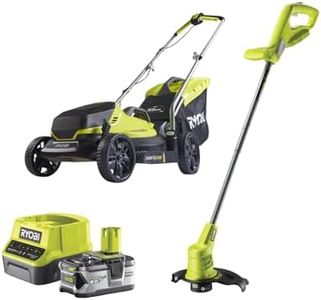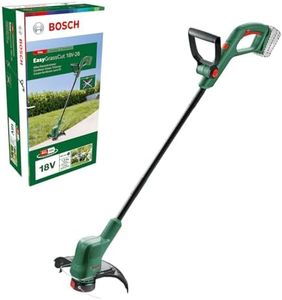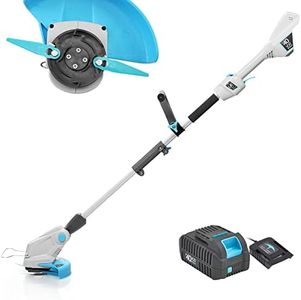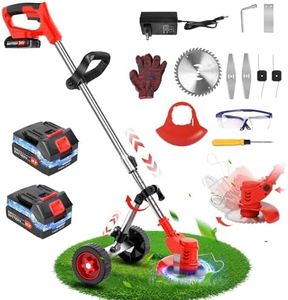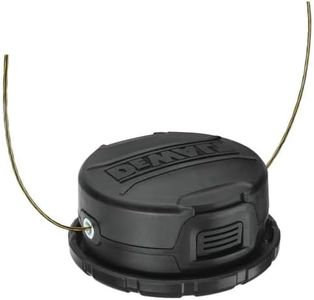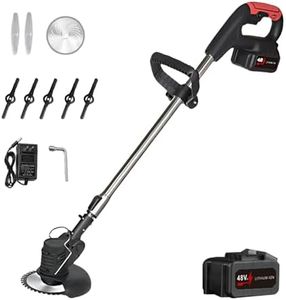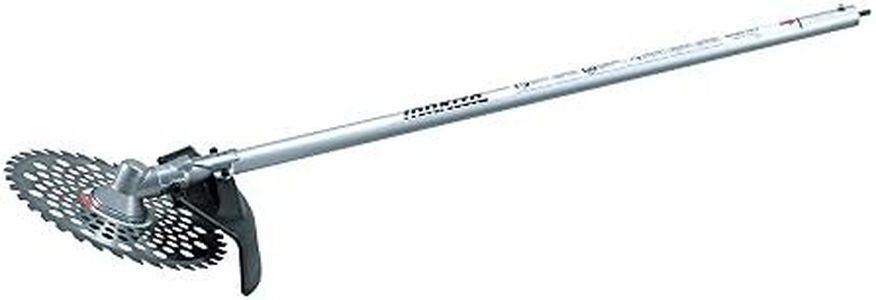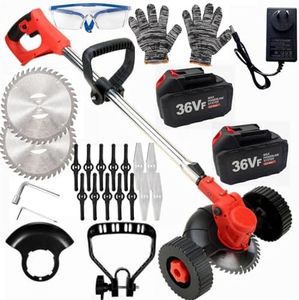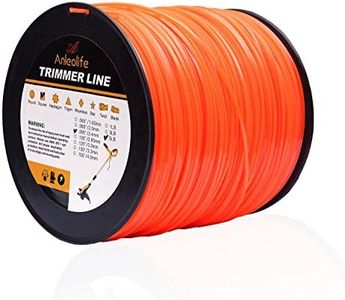We Use CookiesWe use cookies to enhance the security, performance,
functionality and for analytical and promotional activities. By continuing to browse this site you
are agreeing to our privacy policy
10 Best Electric Weed Eaters
From leading brands and best sellers available on the web.By clicking on a link to a third party's website, log data is shared with that third party.
Buying Guide for the Best Electric Weed Eaters
Choosing the right electric weed eater can make yard work much easier and more enjoyable. It's important to match the features of the weed eater to your yard size, types of weeds or grass you'll be cutting, and how comfortable you want the tool to be while working. Start by thinking about how large your space is, whether you have tough weeds or just simple grass, and if there are tight spots or obstacles to work around. Understanding a few key specifications can help you narrow down your options and find the best tool for your needs.Power Source (Corded vs. Cordless)This feature refers to whether the weed eater needs to be plugged in while you use it (corded) or if it operates using a rechargeable battery (cordless). Corded models provide continuous power as long as they're connected to an outlet but limit your range based on the length of your extension cord. Cordless models give you more freedom to move, but they are limited by battery run time. For small yards with nearby outlets, corded can be great. For larger or more awkwardly shaped yards, cordless models offer better mobility.
Cutting WidthCutting width means how wide a path the weed eater trims with each pass. Smaller cutting widths, generally under 12 inches, are suitable for detail work or trimming around delicate plants. Medium widths (12-14 inches) balance maneuverability and speed, ideal for average-sized lawns. Larger cutting widths over 14 inches let you finish bigger areas faster but can be less precise. Base your choice on your yard size and how much intricate trimming you need to do.
WeightWeight determines how heavy the weed eater is while you use it. Lighter models (around 5-7 pounds) are easier to handle for extended periods, making them perfect for smaller yards or those with less physical strength. Heavier models can handle tougher weeds but may cause fatigue during longer jobs. Think about how comfortable you want the tool to feel and how long you expect each session to last.
Line Feed SystemThis refers to how the cutting line is advanced from the spool. Manual feed requires you to stop and pull out more line, while bump feed lets you tap the head to advance it. Automatic feed systems do it for you. Manual systems are simplest but can interrupt your work flow. Bump feed offers a balance of control and convenience, and automatic is the most hassle-free, especially if you want to focus on the job and not tool maintenance. Consider your personal preference for ease of use and how often you're likely to need to replace the line.
Adjustable Shaft and HandleSome weed eaters come with adjustable shafts and handles, allowing you to change the length or angle for better comfort. If you have multiple users in the household or need to reach under bushes or into tight spots, an adjustable shaft is helpful. Fixed shafts can be fine for routine trimming in open spaces, but adjustability greatly enhances comfort and usability for various homeowners and yard layouts.
Noise LevelElectric weed eaters are generally quieter than gas-powered ones, but some make more noise than others. If you have close neighbors or prefer a quieter yard, look for models that are known to operate at lower decibel levels. Picking a quieter model can make your yard work less disruptive and more pleasant, especially if you’ll be using it frequently.
